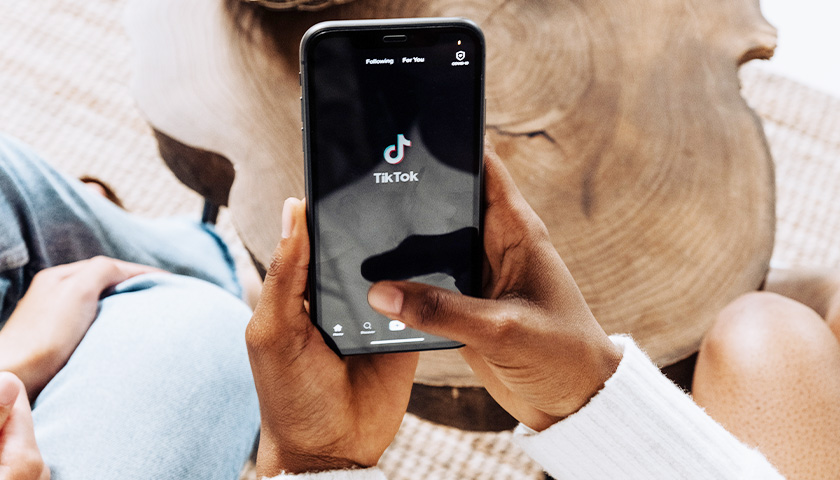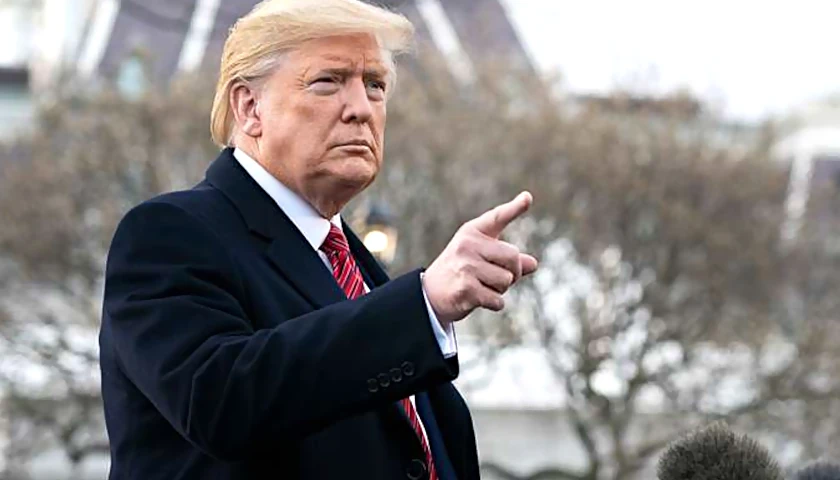by Lisa Murtha
In late November, some Ohio parents received a brochure via snail mail detailing a workshop co-sponsored by their local PTAs and social media app TikTok.
Agendas for the event were included in the mailer but are also posted in media releases on the National PTA and TikTok websites dating back to 2019. “During the family workshops,” readers are told, “parents and teens will: Engage with a student panel about online safety and digital citizenship; Learn about available safety settings and privacy tools within TikTok; [and] Complete a guided activity together that helps illustrate why teens enjoy using TikTok for creative expression.”
Speaking on behalf of TikTok, head of product Sean Kim is quoted in both press releases as saying, “One of our highest priorities at TikTok is to keep our community safe and we have built numerous features into our app for families.” But the message of the mailer overall was mixed: kids using this particular social media app clearly need “safety settings,” but the “guided activity” is worded more like an endorsement of the app — potential encouragement for parents who are on the fence about letting their kids use it.
Not only that, but Tik Tok may have been helping pay for this programming, in the form of dozens of $1000 grants distributed to PTA chapters throughout the nation; the language is unclear, but the social media app has been labeled everything from a “partner” to a “sponsor,” “collaborator” or “supporter” in press releases like this one from the New York State PTA in 2020. Similar vague language is used in TikTok’s own past press releases as well (cited above).
Fast forward to mid-December 2022 and the line of people advocating for banning the app, both on government devices and outright (for concerns about data theft, privacy infringement and young users’ mental well-being) has grown dramatically. What began in 2020 as a Trump executive order to ban the app from U.S. use has culminated in a frightening and damning report issued by an organization just last week whose CEO calls the app “poisonous” to developing young brains. In the interim, elected officials of both parties have begun enacting legislation nationwide that heavily restricts the app’s use.
Given this new information, will both national and local PTA chapters here in Ohio reverse course on promoting a collaborative “workshop” with TikTok that seemingly encourages the app’s use for school kids? The organization’s response to date has been ambivalent at best.
The National PTA
Current website statements against school vouchers and pro-federal firearms restrictions aside, the National PTA has historically remained above the fray with regards to political trends. In fact, the PTA notes on its own site that it has been one of the largest and most successful advocates for children nationwide since it’s 1897 inception, having helped create, implement and/or advocate for historic firsts in education ranging from child labor laws to kindergarten classes, hot lunch programs and exposure to the arts. In short, the PTA website notes, “National PTA is a powerful voice for all children, a relevant resource for families and communities, and a strong advocate for public education.”
Likely in that same vein, PTA administrators formed a “PTA Connected” program in 2018, in an attempt “to help children act safely, responsibly and thoughtfully online.” The program was aimed at “exploring in-depth the issues that are on the minds of today’s families, and connecting parents with tools, research and supports to make the best decisions for their children.” It included “digital safety tools and resources” and best practices tips when using digital media and was initially sponsored by Symantec, Google, Facebook and AT&T.
One year later, though, in 2019, the national PTA acquired two new programming sponsors — Norton/Life360 and social media outlet TikTok. Before the COVID-19 pandemic, not many people knew what TikTok, a short video app initially launched in 2016 in China as Douyin (and created by Chinese billionaire Zhang Yiming), was. But in 2017, the app became available globally and was quickly embraced by social media users worldwide. By 2020, though, it had become clear to many that TikTok was more than just a harmless entertainment platform; instead, parents and government officials alike had begun viewing it as a sort of Trojan Horse — a means of collecting and sharing intimate personal data about its users with the Chinese government.
By September 2021, TikTok was reporting “1 billion monthly active users globally,” says Reuters; even so, some leaders saw the dangers. In June 2020, India banned the app; two months later, President Trump signed an executive order banning the app’s operations in the U.S. (an order the Biden administration undid in June 2021). Now, late into 2022, calls to ban the app have renewed and multiplied.
Last month, FCC Commissioner Brendan Carr joined the fray, not only calling for a ban on the app and identifying it as “digital fentanyl,” but also noting that the app pulls “everything from search and browsing history, potentially keystroke patterns, biometrics, including face prints and voice prints.” And in recent months eight U.S. states (Iowa, South Dakota, South Carolina, Texas, Maryland, Alabama and Utah) have banned use of the app on government devices. In one CBS news story, Texas Gov. Greg Abbot was quoted as saying, “TikTok harvests vast amounts of data from its users devices … and offers this trove of potentially sensitive information to the Chinese government.”
Last week, FBI Director Christopher Wray all but named TikTok a national security threat, the U.S. Senate voted unanimously to ban the app from federal government devices and a bipartisan group of U.S. senators introduced legislation — the Averting the National Threat of Internet Surveillance, Oppressive Censorship and Influence and Algorithmic Learning by the Chinese Communist Party, or ANTI-SOCIAL CCP Act — to ban the app from the U.S. outright.
“This isn’t about creative videos,” said Florida Senator Marco Rubio in a statement about the bipartisan legislation he co-sponsored to ban TikTok. “This is about an app that is collecting data on tens of millions of American children and adults every day.”
‘Poisoning their minds’
The most damning evidence to date against allowing kids, teens and young adults to use TikTok arrived last week, when the Center for Countering Digital Hate (CCDH) — an organization that has previously advocated against “identity-based hate, climate change denial and health disinformation” — released a new report on TikTok titled Deadly By Design, with the subhead: “TikTok pushes harmful content promoting eating disorders and self harm into users’ feeds.” The report’s most striking findings include: “Suicide content was recommended [to users] within 2.6 minutes” of opening the app and “eating disorder content was recommended within 8 minutes.” In addition, “a new TikTok account set up by a 13-year-old user that views and likes content about body image and mental health will be recommended that content every 39 seconds” — rapid fire exposure to disturbing content for a still-developing brain.
“TikTok was designed to dazzle young users into giving up their time and attention,” noted CCDH CEO Imran Ahmed in a December 15 blog post, “but our research proves that its algorithms are not just entertaining children but poisoning their minds too. It promotes to children hatred of their own bodies and extreme suggestions of self-harm and disordered, potentially deadly, attitudes to food. Parents will be shocked,” Ahmed adds, “to learn the truth.”
The CCDH CEO is hardly alone in calling out the dangers of social media apps like TikTok for kids. Last weekend, 60 Minutes spotlighted two families who suffered devastating trauma after their daughters were repeatedly exposed to disturbing content from social media sites (one developed an eating disorder; the other committed suicide). The program’s producers noted 1,200 families are currently suing social media companies, including TikTok, Facebook and Instagram, for the harm they’ve caused; “more than 150 lawsuits,” CBS reports, will be moving forward next year.”
Ultimately, said parent Toney Roberts in the 60 Minutes segment (his 14-year-old daughter Englyn committed suicide after watching a how-to tutorial on Instagram), “Social media is the silent killer for our children’s generation. That’s the conclusion I’ve come to. Why is everyone in power that can help change this, why is it not changing quickly enough? If our children are truly our future, what’s the wait?
Perception versus practice: A ban has widespread support but Ohio PTAs still applying for money to host TikTok workshops
Today, despite the fact that, per CCDH, “two-thirds of American teenagers use TikTok [and] the average viewer spends 80 minutes a day on the application,” a nationwide ban on the app — not just from government devices but from all devices throughout the U.S. — seems to have widespread support. A Decmeber 9 Rasmussen survey found 68% of likely U.S. voters “support proposals by some members of Congress for federal legislation to ban TikTok from the United States.”
To date, though, the PTA has not yet publicly severed ties with the app. In fact, multiple Ohio PTA chapters have applied for the funding to put on the TikTok-sponsored workshops, said President Jackie Arendt via email (Arendt was the only PTA administrator, along with President-Elect Angela Revay, to reply to requests for information about the TikTok/PTA collaboration; national PTA Media Relations Manager Heidi May Wilson neither responded to email nor voicemail requests for comment).
Arendt could not identify which, “if any,” of the approximately 429 different PTA units throughout Ohio had received TikTok funds, she said. She also did not identify which chapters applied and referred OPN to National PTA for “clarification” about the origins of the National PTA/TikTok collaboration and the intent behind the project. Arendt did note that “[The Ohio PTA] didn’t partner with TikTok directly, only as part of our association with national PTA. We know PTA doesn’t casually enter a relationship with any group.”
Meantime, last week, on December 14, Axios.com published a story titled “No TikTok ban in Ohio, bucking trend in GOP-led states.” It noted that “a spokesperson for Gov. Mike DeWine tells Axios the state is ‘constantly evaluating security measures and policies,’ including those involving social media usage.” But it also noted that “several public entities, like the Ohio Department of Transportation, have official TikTok accounts.”
In the past, TikTok/PTA collaborative events have happened in February, in conjunction with International “Safer Internet Day.” Ohio parents interested in learning more about whether their school’s PTA chapter is planning to host a TikTok-sponsored workshop can locate their PTA regions on this map and can contact their regional PTA advisors at the email addresses listed under the “Region Advisors” subheading on this page.
– – –
Lisa Murtha has worked 25 years as a freelance journalist nationwide and won multiple awards. In 2021 she was named “Best Freelance Writer” by the Ohio Society of Professional Journalists. Lisa is a contributing journalist to The Ohio Press Network.
Photo “TikTok” by cottonbro.




